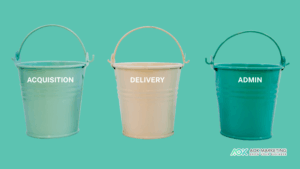The 4 Ps of marketing—Product, Price, Place, and Promotion—serve as the backbone of any successful marketing strategy. When integrated with e-commerce and paid media, these principles can drive significant growth, enhance customer engagement, and boost sales. This article will explore how to consider each of the 4 Ps in the context of e-commerce and paid media, ensuring your strategy is both comprehensive and effective.
1. Product: Aligning Offerings with Customer Needs
In the e-commerce space, your product is the cornerstone of your business. It’s essential to ensure that what you offer not only meets but exceeds customer expectations. This involves a deep understanding of your target audience, their needs, preferences, and pain points.
Product Selection: Choose products that resonate with your audience and align with current trends. In e-commerce, niche products or those with unique value propositions often perform well, especially in competitive markets. Regularly analyze customer feedback and purchase data to refine your product offerings.
Product Presentation: In an online environment, presentation is everything. High-quality images, detailed descriptions, and user-generated content like reviews or testimonials can significantly influence purchase decisions. Ensure that your product pages are optimized with clear, compelling copy and visuals that showcase the benefits and features of your products.
Product Differentiation: Stand out by highlighting what makes your product unique. Whether it’s quality, design, sustainability, or a specific feature, your product’s unique selling proposition (USP) should be clearly communicated across all marketing channels.
2. Price: Strategic Pricing for Maximum Impact
Price is a critical factor in e-commerce, directly impacting your conversion rates, customer perception, and profitability. In the digital marketplace, where comparison shopping is just a click away, your pricing strategy must be carefully crafted.
Competitive Pricing: Research your competitors to understand the market standard for pricing similar products. Tools like Google Shopping or price comparison websites can help you gauge where your prices stand relative to the competition.
Dynamic Pricing: Consider implementing dynamic pricing strategies that adjust based on demand, inventory levels, or even time of day. This approach can help you maximize profits while staying competitive. Additionally, offering discounts or promotions during peak shopping periods can drive traffic and increase sales.
Perceived Value: The price of your product should reflect its perceived value. Higher-priced items should be positioned as premium, with messaging that reinforces their quality, exclusivity, or other high-value attributes. Conversely, if you’re competing on price, ensure that your messaging emphasizes affordability and value for money.
3. Place: Optimizing Your Sales Channels
In e-commerce, “place” refers to the platforms and channels through which your products are sold. Optimizing your sales channels is crucial for reaching your target audience effectively.
Website Optimization: Your e-commerce website is your primary sales channel, and it must provide a seamless shopping experience. This includes fast loading times, mobile responsiveness, easy navigation, and a streamlined checkout process. Investing in a well-designed, user-friendly website can significantly reduce cart abandonment and increase conversions.
Marketplace Presence: Consider selling on popular online marketplaces like Amazon, eBay, or Etsy, depending on your product category. These platforms offer access to a broader audience and can complement your direct-to-consumer sales efforts. However, it’s important to balance the benefits of increased exposure with the costs associated with selling on third-party platforms.
Global Reach: With e-commerce, the world is your marketplace. Consider expanding your reach by offering international shipping or setting up localized versions of your website for key markets. Make sure to account for language, currency, and regional preferences in your global strategy.
4. Promotion: Driving Traffic and Conversions
Promotion in the e-commerce and paid media space involves strategically leveraging various digital marketing tactics to drive traffic, increase brand awareness, and convert visitors into customers.
Paid Media Advertising: Paid media is a powerful tool for driving targeted traffic to your e-commerce site. This includes pay-per-click (PPC) ads on search engines, social media advertising, display ads, and retargeting campaigns. Utilize platforms like Google Ads and Facebook Ads to reach your target audience with precision, using detailed targeting options to ensure your ads are seen by potential customers.
Content Marketing: Content is king in the digital world. Use blog posts, videos, social media content, and email marketing to engage your audience and drive traffic to your site. SEO-optimized content can help improve your organic search rankings, making it easier for customers to find you.
Email Marketing: Build and maintain relationships with your customers through email marketing. Segmented email campaigns can target specific customer groups with tailored messages, whether it’s a product announcement, a special offer, or a personalized recommendation based on past purchases.
Influencer Marketing: Partnering with influencers in your niche can amplify your reach and credibility. Influencers can create authentic content that resonates with their followers, driving traffic and sales for your e-commerce business.
Promotional Campaigns: Flash sales, limited-time offers, and exclusive deals can create urgency and drive immediate sales. Use promotional campaigns strategically, leveraging email, social media, and paid ads to maximize their impact.
Integrating the 4 Ps in E-commerce & Paid Media
To create a cohesive and effective marketing strategy, it’s important to integrate the 4 Ps seamlessly. Here’s how:
Consistency Across Channels: Ensure that your messaging, branding, and positioning are consistent across all marketing channels. Whether a customer interacts with your product on social media, your website, or through a paid ad, the experience should be unified and reinforce your brand’s identity.
Data-Driven Decision Making: Use data analytics to inform your strategy at every step. Monitor customer behavior, sales performance, and campaign effectiveness to make informed adjustments to your product offerings, pricing, placement, and promotions.
Customer-Centric Approach: Keep the customer at the center of your strategy. Understand their journey, preferences, and pain points, and tailor your 4 Ps to meet their needs. Personalization is key in today’s competitive e-commerce environment.
Conclusion
Incorporating the 4 Ps of marketing—Product, Price, Place, and Promotion—into your e-commerce and paid media strategy is essential for achieving sustained growth and success. By aligning these principles with the unique demands of the digital marketplace, you can create a marketing plan that not only attracts and converts customers but also builds long-term brand loyalty. Whether you’re a seasoned marketer or just starting in e-commerce, keeping the 4 Ps in mind will help you navigate the complexities of the digital landscape and drive meaningful results.
About The Author
Marketing Team
The AOK Marketing Team is a diverse group of amazing individuals driven to help all of our clients succeed. Great people are everywhere, and we believe that people should control their workday, their work environment, and where they live. We have team members in 9 countries: United States, Canada, Egypt, Belgium, Ireland, Australia, India, Pakistan, and Hong Kong.
How can we help you?






